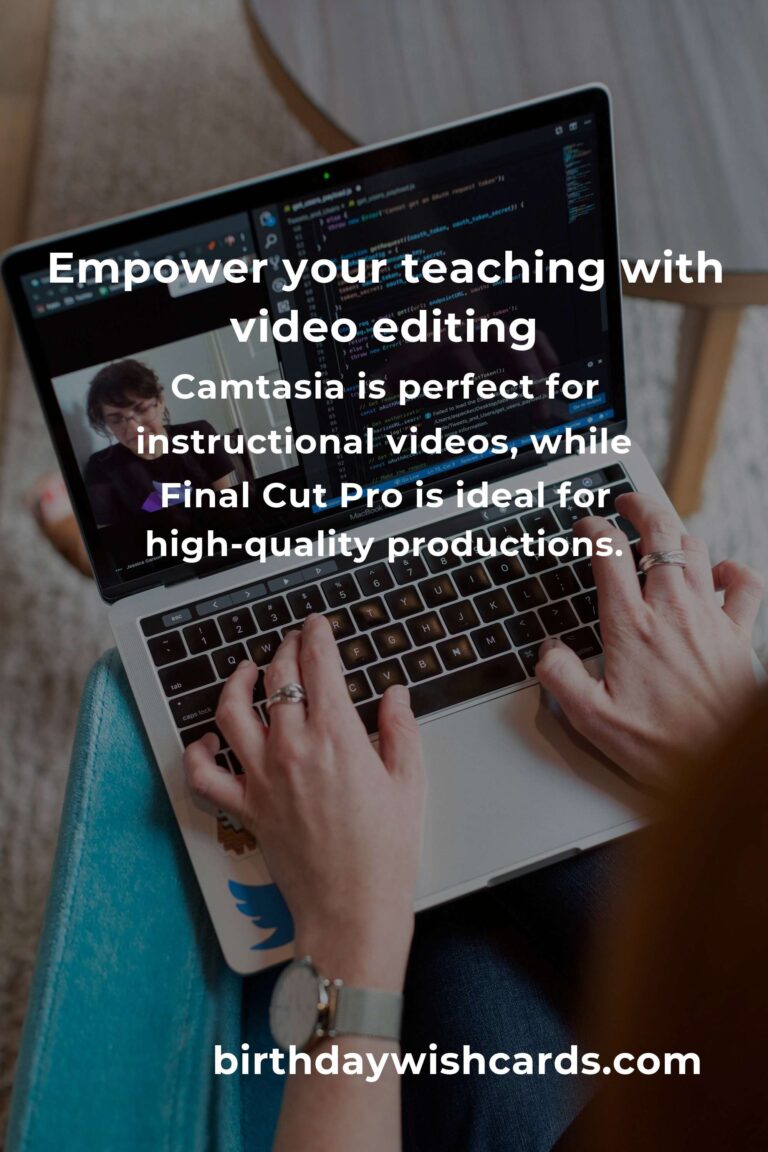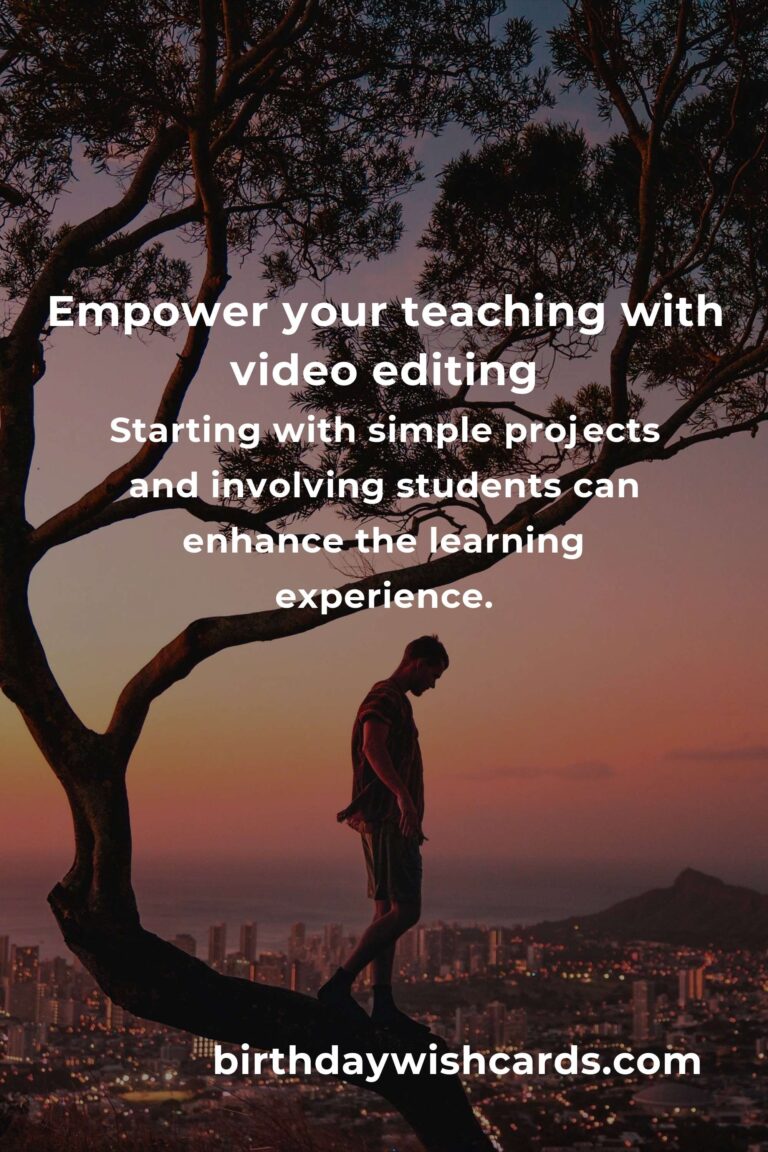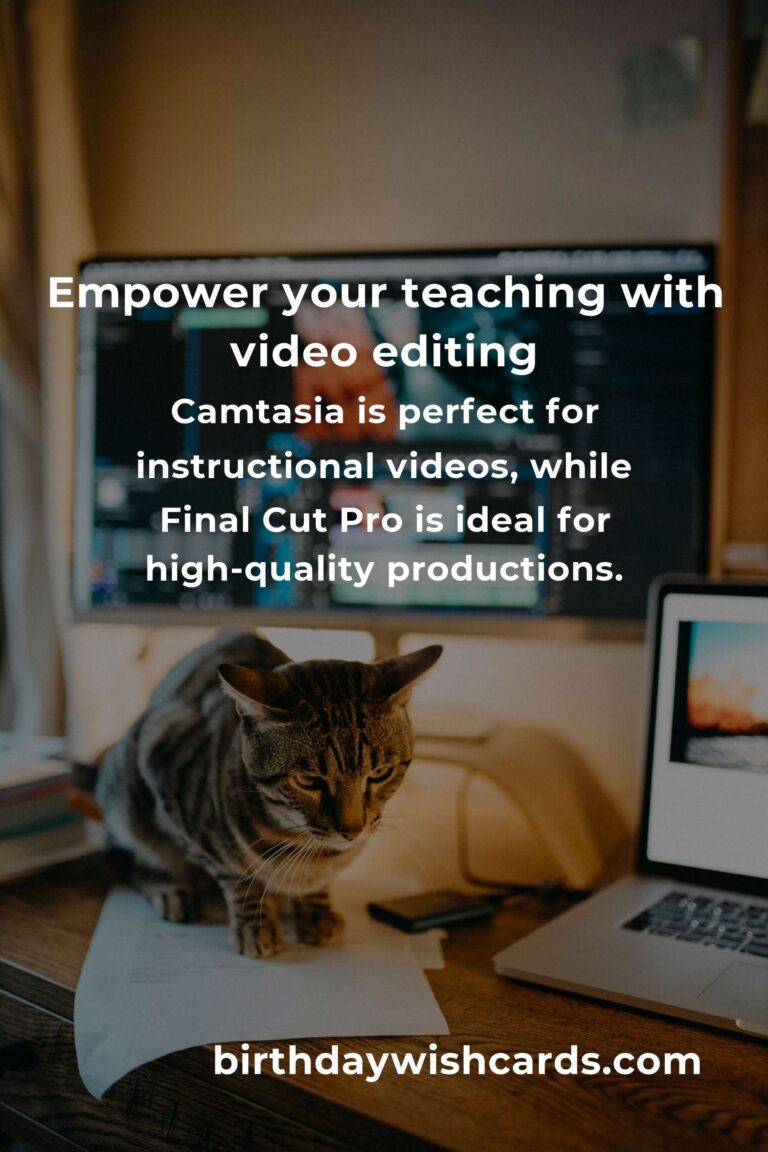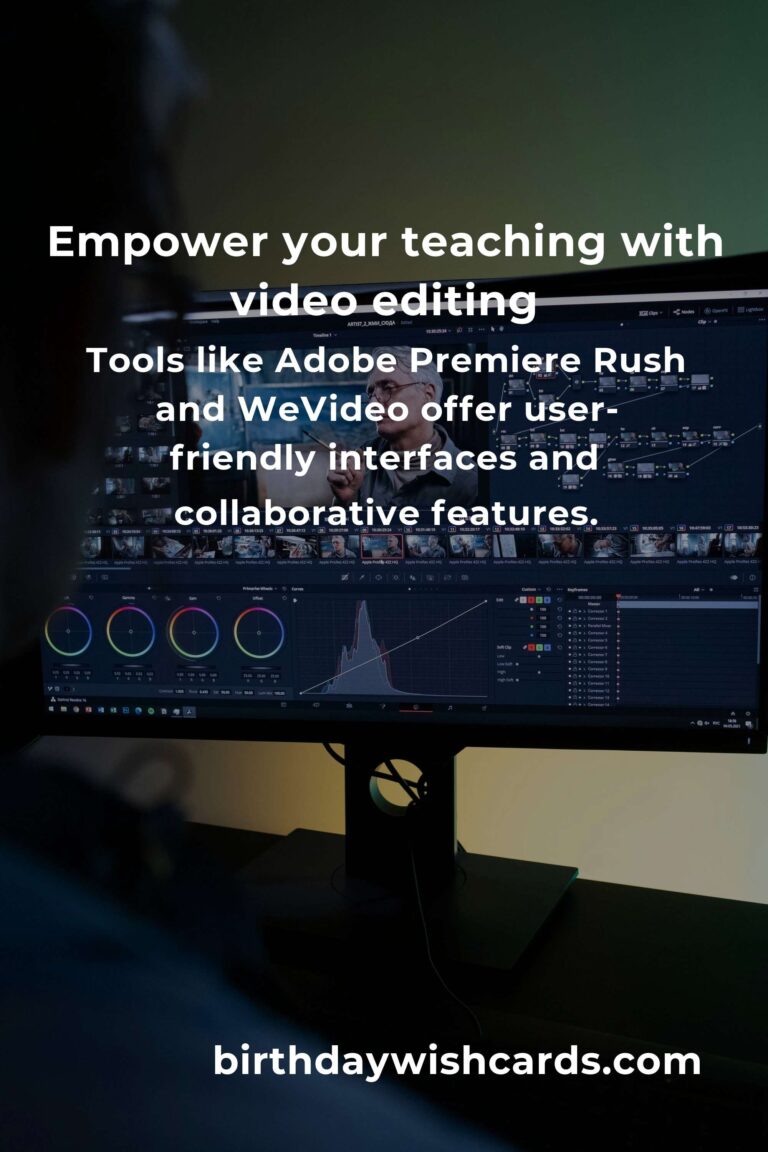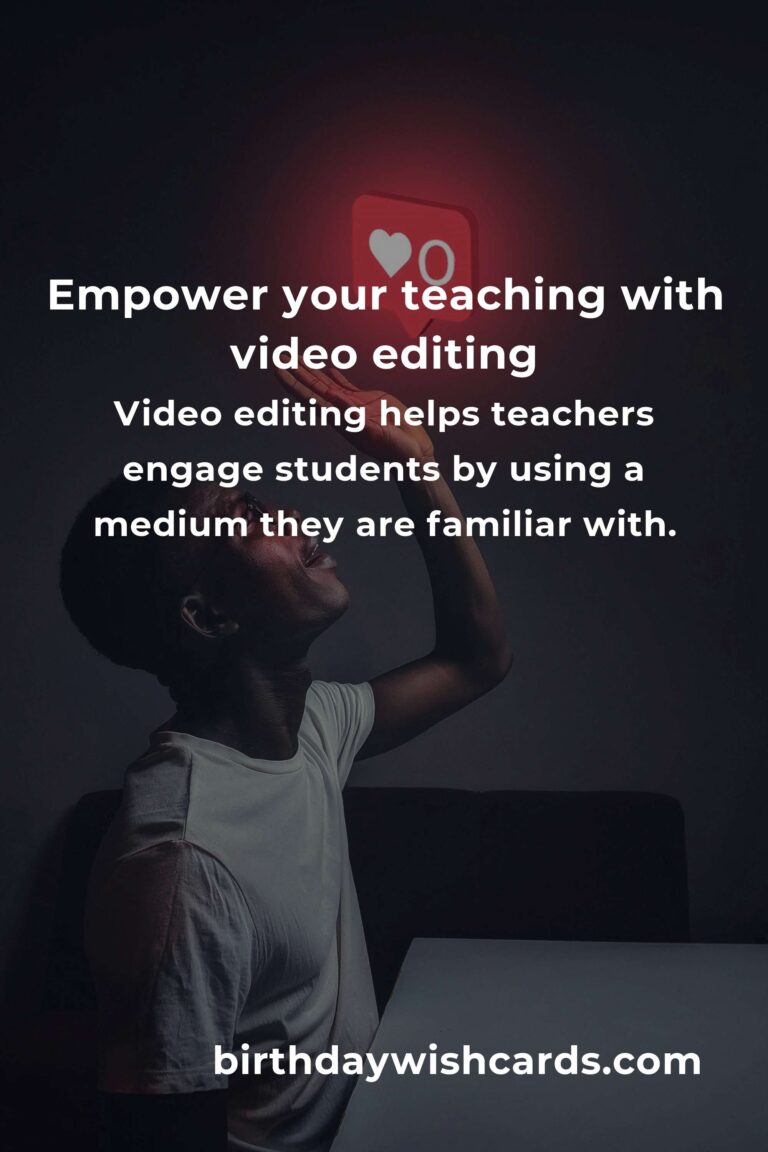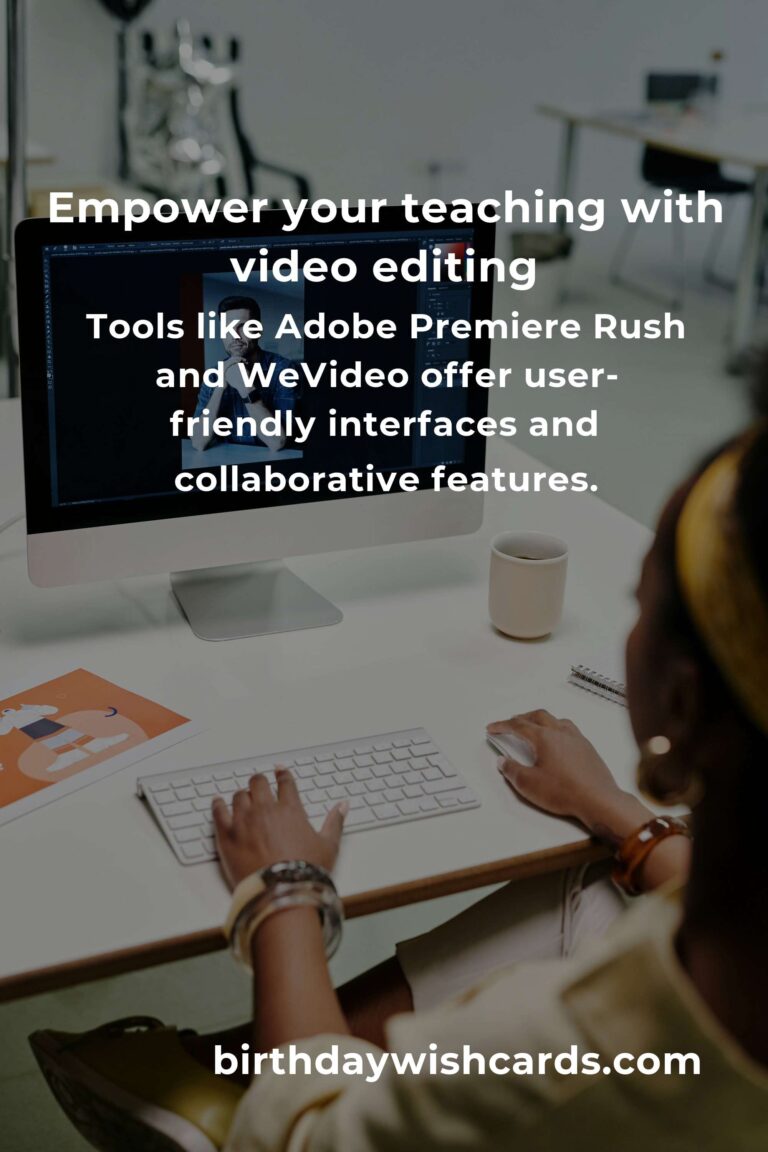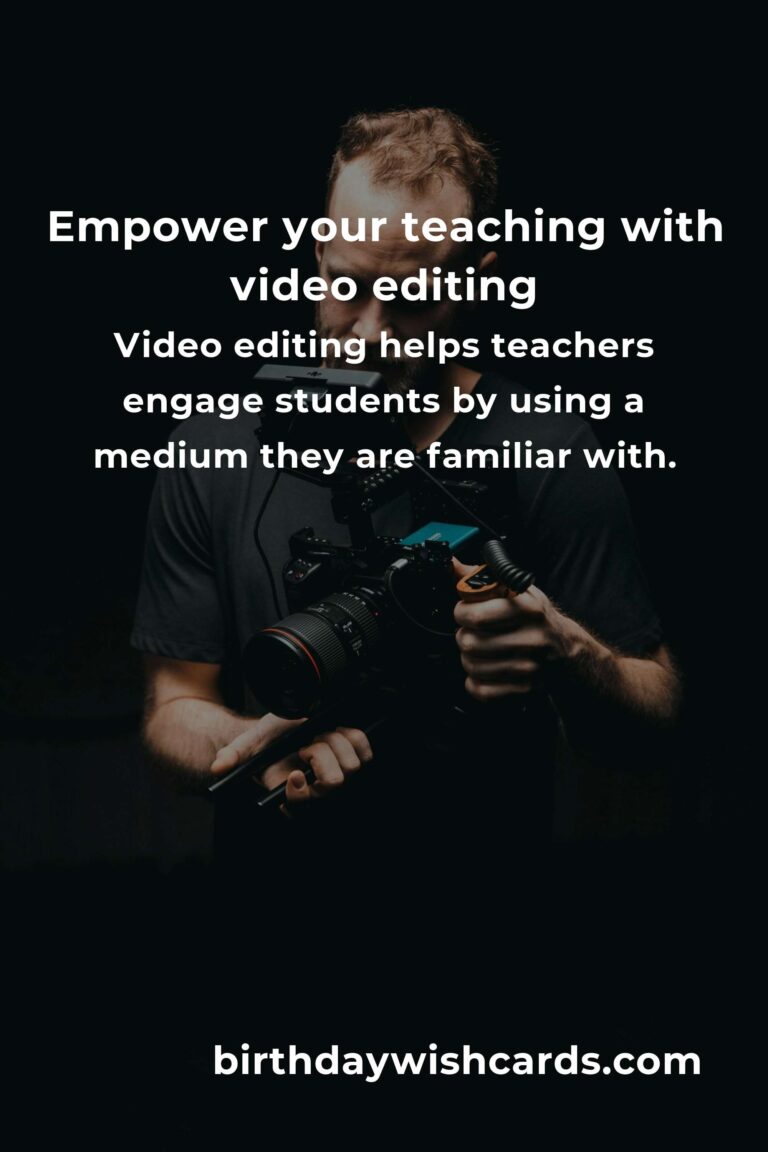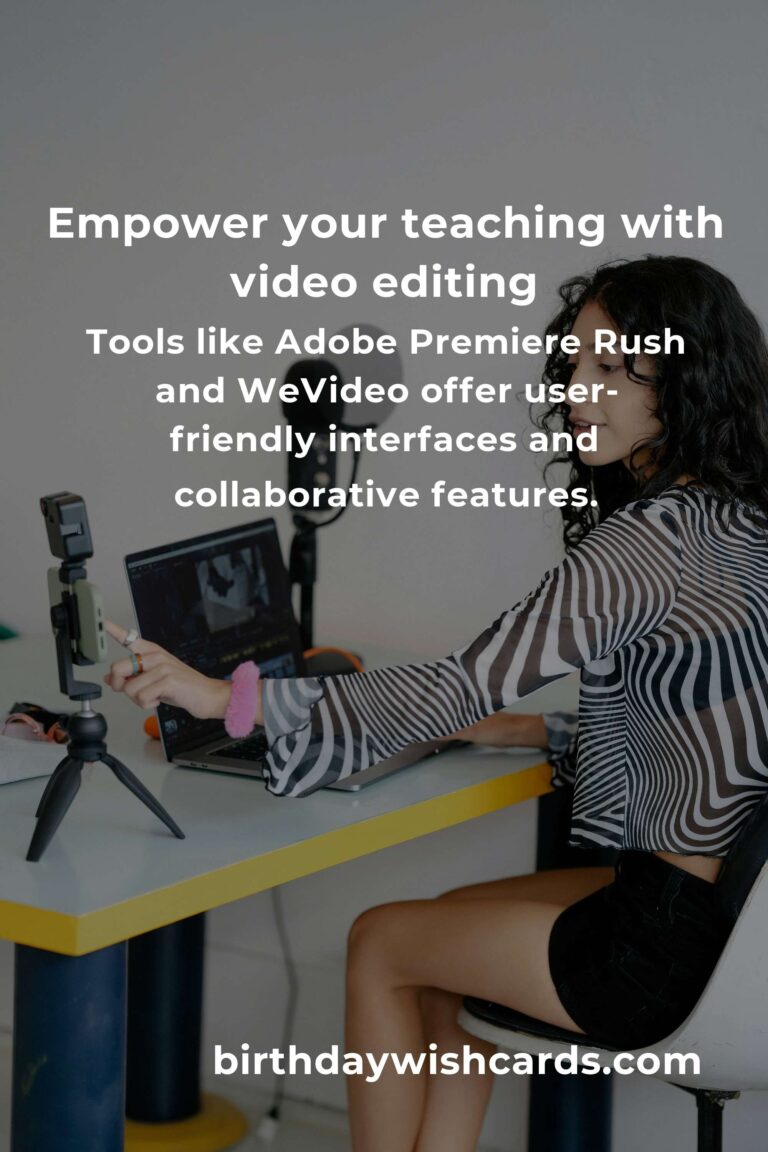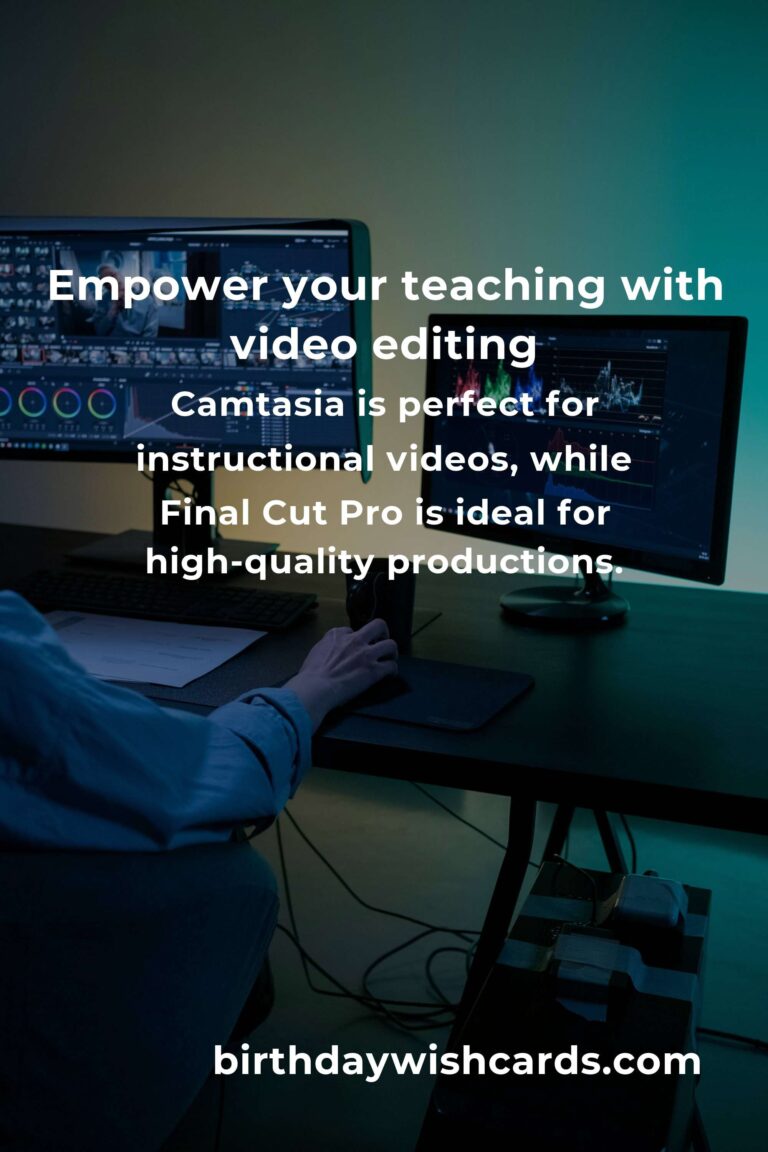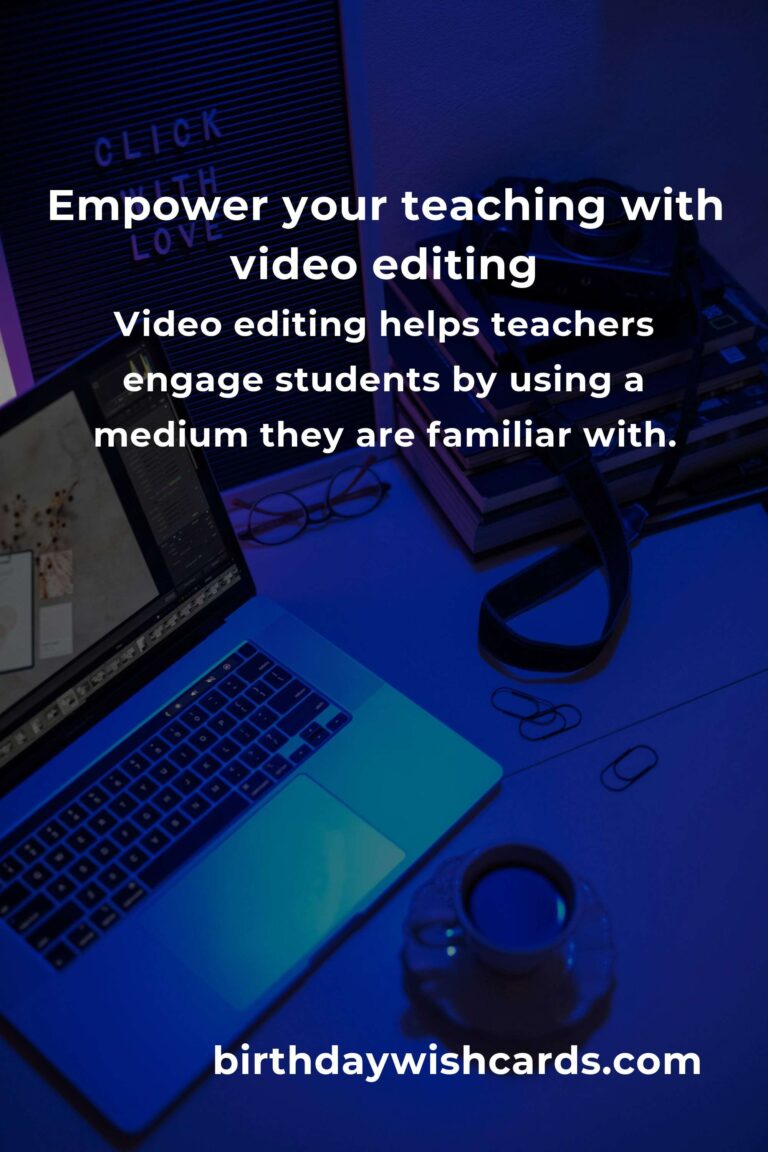
In the ever-evolving landscape of education, the way we teach and connect with students is constantly transforming. As we step into 2025, teachers are embracing technology like never before, finding innovative ways to engage, inspire, and educate. One of the most effective tools in this digital era is video editing software. Whether you’re flipping your classroom, creating instructional videos, or just adding a creative flair to your lessons, mastering video editing can make a significant impact.
Why Video Editing Matters for Teachers
Let’s face it; students today are digital natives. They are accustomed to consuming content through videos, social media, and interactive platforms. By integrating video into your teaching methods, you can meet students where they are and capture their attention more effectively. More than just a medium of instruction, videos allow for storytelling, bringing concepts to life in a way that static text cannot.
Imagine explaining a complex scientific concept through a dynamic video or reviewing historical events with engaging visuals and sound. The possibilities are endless, and the benefits are immense. Videos cater to various learning styles, whether auditory, visual, or kinesthetic, ensuring no student is left behind.
The Best Video Editing Tools for Teachers in 2025
With numerous options available, choosing the right video editing tool can be overwhelming. Here are some top picks for 2025 that combine ease of use, affordability, and powerful features, making them perfect for educators:
1. Adobe Premiere Rush
Adobe Premiere Rush is a fantastic choice for teachers seeking a user-friendly yet powerful editing tool. Its intuitive interface allows you to quickly create professional-quality videos, even if you’re a beginner. With features like drag-and-drop editing, voiceovers, and transitions, you can craft engaging content without spending hours learning the software.
Moreover, Premiere Rush seamlessly integrates with Adobe Creative Cloud, enabling you to access other Adobe tools if you choose to expand your creative capabilities. The cross-platform functionality means you can edit on your phone, tablet, or computer, providing flexibility for busy educators.
2. WeVideo
WeVideo stands out for its collaborative features, making it ideal for teachers who want to involve students in the video creation process. With cloud-based storage, multiple users can work on a project simultaneously, fostering a spirit of teamwork and creativity in the classroom.
The platform offers a vast library of stock media, music, and sound effects, perfect for enhancing your videos without additional costs. WeVideo’s straightforward interface is designed with educators in mind, ensuring you spend more time creating and less time troubleshooting.
3. Camtasia
If your focus is on creating instructional videos or screen recordings, Camtasia is a must-have. Known for its screen capture capabilities, Camtasia allows you to record your screen and add annotations, quizzes, and interactive elements, making it an excellent tool for flipped classrooms and online courses.
Its powerful editing features enable you to trim, splice, and add effects with ease. For teachers who want to create comprehensive tutorials or step-by-step guides, Camtasia offers precision and clarity.
4. Final Cut Pro for Mac Users
For those who are more experienced or looking to advance their editing skills, Final Cut Pro offers professional-grade features. While it’s more complex than some of the other tools listed, the quality and capabilities it offers are unmatched.
Final Cut Pro is ideal for educators who want to produce high-definition, cinematic-quality content. Its magnetic timeline, advanced color grading, and extensive effects library provide everything you need to create visually stunning videos.
Getting Started: Tips for Teachers
Choosing the right tool is just the first step. Here are some tips to help you get started with video editing in your classroom:
1. **Start Simple**: Begin with short videos and gradually incorporate more advanced features as your confidence grows.
2. **Engage Students**: Involve your students in the production process. Assign roles like scriptwriter, editor, or director to encourage participation and creativity.
3. **Focus on Storytelling**: Whether it’s a lesson plan or a student project, emphasize the narrative. A strong story can make any subject more compelling.
4. **Utilize Resources**: Many platforms offer tutorials and community forums. Don’t hesitate to seek guidance and learn from others.
Embracing the Future of Education
As we look to the future, the role of technology in education will continue to grow. By integrating video editing into your teaching repertoire, you’re not just adapting to change; you’re leading it. These tools empower you to create a more dynamic, inclusive, and engaging learning environment.
In 2025, let’s embrace these innovations, leveraging our creativity and passion for teaching to inspire the next generation. After all, education is not just about imparting knowledge; it’s about igniting a lifelong love for learning.
Video editing helps teachers engage students by using a medium they are familiar with.
Tools like Adobe Premiere Rush and WeVideo offer user-friendly interfaces and collaborative features.
Camtasia is perfect for instructional videos, while Final Cut Pro is ideal for high-quality productions.
Starting with simple projects and involving students can enhance the learning experience.
#VideoEditingForTeachers #InnovativeTeaching #EngageWithVideo #Education2025 #CreativeClassroom


